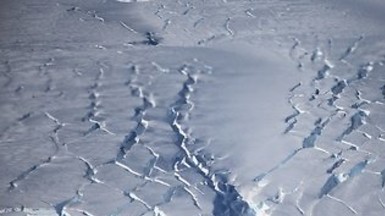Your podcast discovery platform
Curious minds select the most fascinating podcasts from around the world. Discover hand-piqd audio recommendations on your favorite topics.

piqer for: Climate and Environment Global finds
Andrea is a writer and researcher based out of Chicago. Andrea has a Bachelor's degree in environmental science from The Ohio State University and a Master's in Environmental Planning and Management at National Taiwan University, where she specialized in climate adaptation and urbanization. She writes for TaiwaneseAmerican.org, and sends out a biweekly newsletter which includes articles on politics, environment, identity, and intersections of race, class, and gender (http://eepurl.com/bPv-F5).
There's A Lot We Don't Know About Eastern Antarctica
“Almost everything we thought we knew about East Antarctica has turned out to be wrong,” says Tas van Ommen, a glaciologist. In the last few years, scientists have found that there is a lot more to East Antarctica than previous believed. What was once thought as a vast, cold, and stable ice sheet mostly above sea level, has recently been discovered to have large portions under the water level and seems to be much more reactive to climatic changes. West Antarctica has had much more press, but it seems that the eastern side is about to get its spotlight. And we'd better pay attention, because "if all the ice below sea level in East Antarctica were to disappear, the height of the world’s oceans would swell by nearly 20 metres".
Using satellite imagery, aerial surveys, and climate models, researchers found that not only were six ice shelves in the east melting from below more quickly than expected, but that there are canyons and troughs and lakes underneath the surface that could accelerate melting. Furthermore, it has been found that the ice sheet has not been stable for 14 million years, but has waxed and waned according to temperature differences.
And while computer models predicting ice melt are still being refined, if temperatures can stay below 1.6°C of warming (about Paris Agreement levels), the sheet appears safe. But, if "temperatures rise more than about 2.5°C above pre-industrial levels by 2100 and continue climbing, Antarctic ice melt will raise ocean levels by 5 metres by 2500, with nearly half of that coming from East Antarctica. With Greenland ice also melting, the global sea level would rise by at least 7 metres—enough to inundate large parts of major coastal cities such as Mumbai, Shanghai, Vancouver and New York."
Scientists are only just starting to gather more data on Eastern Antarctica, but it seems that it may play a huge role in the amount of sea level rise, considering what we know about positive feedback loops in biophysical systems on Earth.
